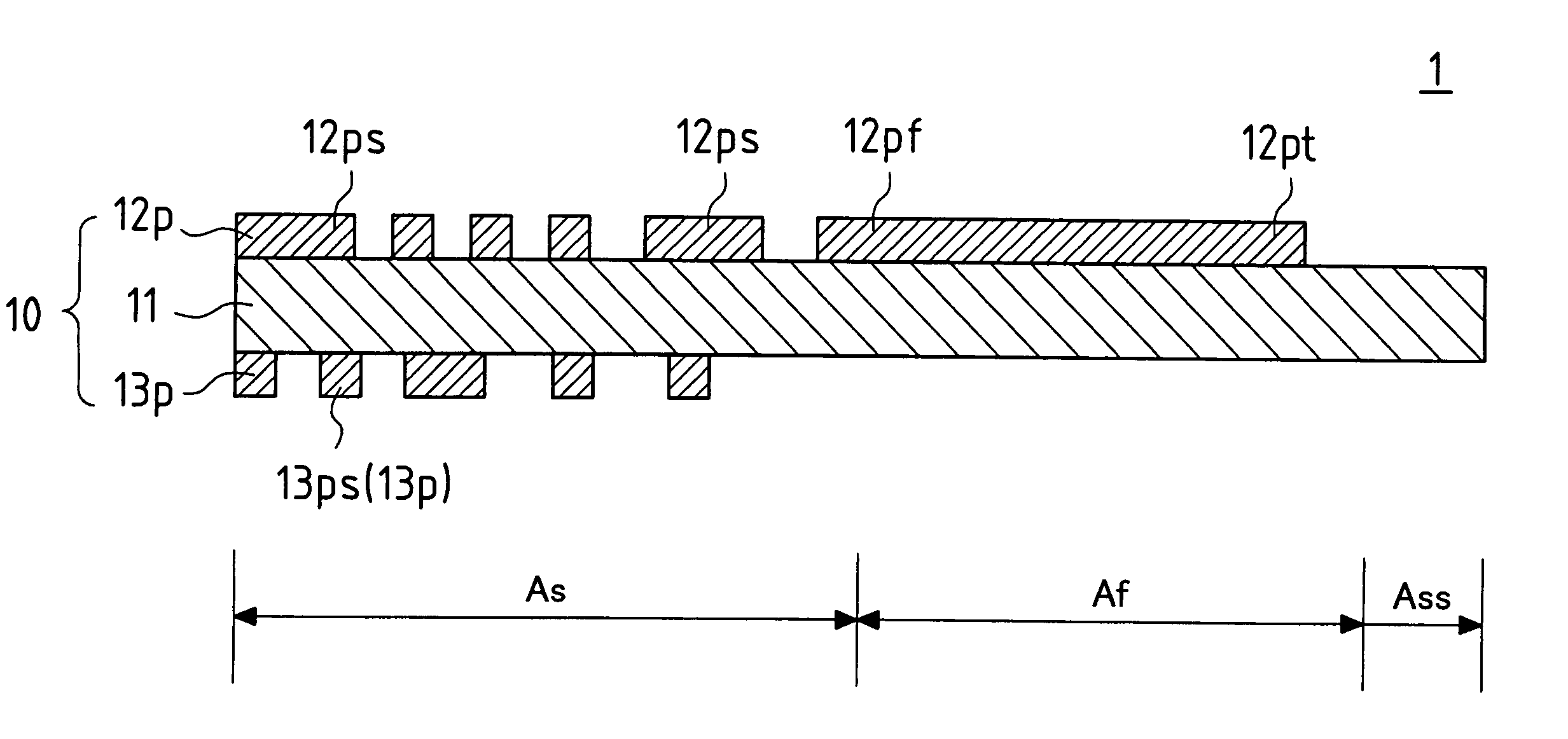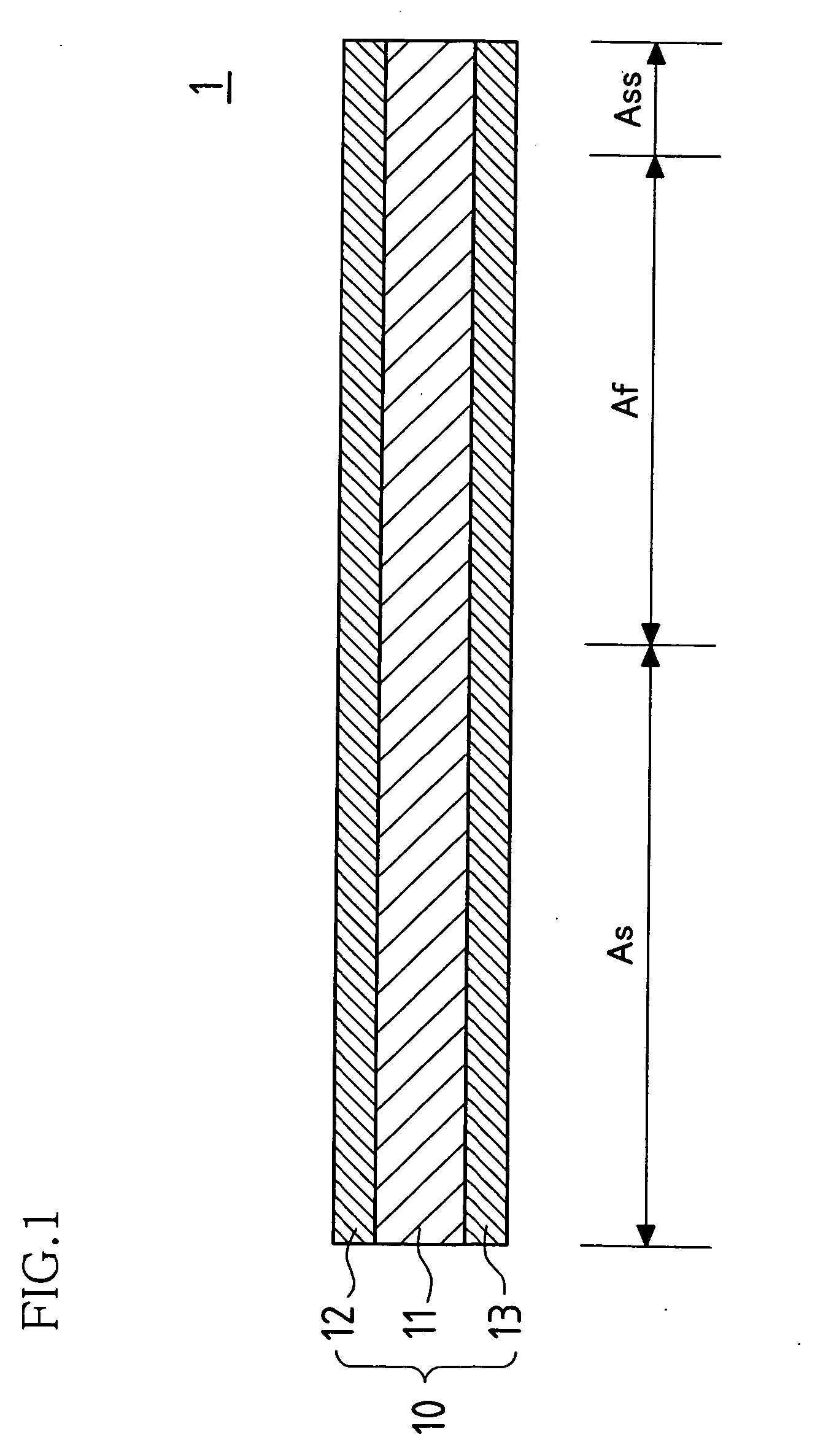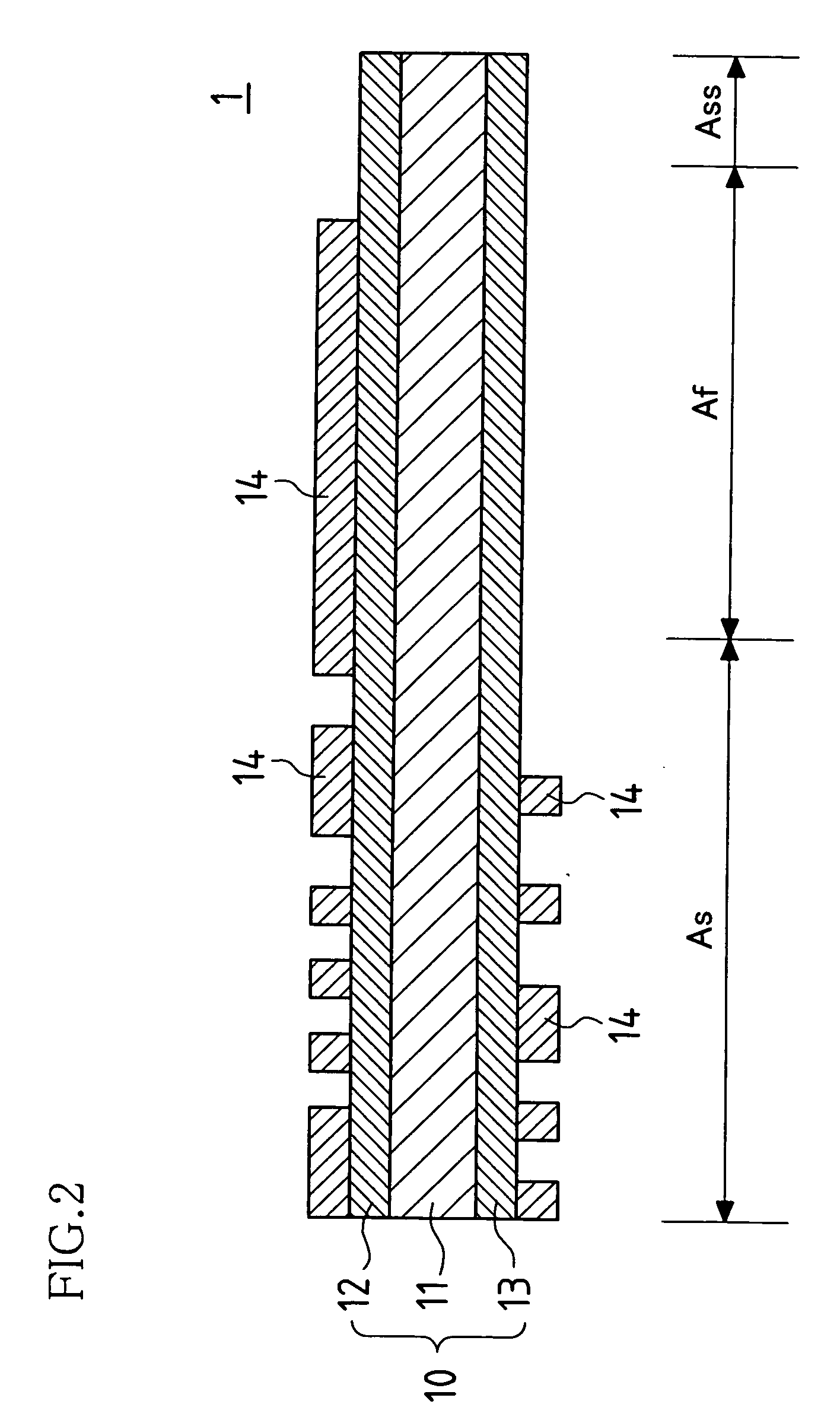Multilayer printed wiring board and method for producing the same
a printing method and wiring board technology, applied in the direction of printed circuit manufacturing, printed circuit aspects, non-metallic protective coating applications, etc., can solve the problems of reducing the service life of the wire, so as to improve the work efficiency and reduce the cost. , the effect of dimensional precision and wiring density
- Summary
- Abstract
- Description
- Claims
- Application Information
AI Technical Summary
Benefits of technology
Problems solved by technology
Method used
Image
Examples
embodiment 1
[0120] FIGS. 1 to 7 are explanatory diagrams for explaining the state of a multilayer printed wiring board in each production process for a multilayer printed wiring board according to Embodiment 1 of the present invention.
[0121]FIG. 1 is a cross-sectional diagram that shows a cross-section of a flexible base material that constitutes an inner layer and a flexible portion, in a multilayer printed wiring board according to Embodiment 1 of the present invention.
[0122] A flexible base material 10 that constitutes an inner layer and a flexible portion Af of a multilayer printed wiring board 1 is provided with an insulation layer 11 and conductor layers 12 and 13 that have been layered on both faces of the insulation layer 11. Below, this is referred to as the multilayer printed wiring board 1 even in the midst of processing.
[0123] As the flexible base material 10, two-sided flexible wiring board material that is ordinarily commercially available can be used. The insulation layer 11 i...
embodiment 2
[0165]FIG. 8 is a cross-sectional diagram that shows a cross-section of a state in which a covering layer has been formed, in a multilayer printed wiring board according to Embodiment 2 of the present invention. The same configurations as in Embodiment 1 have the same reference numerals, and a detailed description thereof is omitted here.
[0166] The present embodiment is nearly the same as Embodiment 1, but here the configuration of the covering layers 30 and 31 in Embodiment 1 is modified.
[0167] In the present embodiment, instead of the covering layers 30 and 31 formed in Embodiment 1, covering layers 32, 33, and 34 are formed. That is, corresponding to the covering layer 30, a first covering layer 32 that continuously covers a partial region of the hard base material 20 and the flexible base material 10, and a second covering layer 33 that covers a region other than the partial region of the hard base material 20, are formed, and corresponding to the covering layer 31, a covering...
embodiment 3
[0169] In the process of layering the hard base material 20 according to Embodiment 1, the hard base material 20 of the region that corresponds to the flexible portion Af and the flexible base material 10, although the adhesive layers 15 and 16 are not present, is fitted very well with pressure and heat when layering.
[0170] Accordingly, in order to peel away the hard base material 20 of the region that corresponds to the flexible portion Af without deforming or damaging the flexible portion Af, careful work is necessary, and defects easily occur. Also, because processing work is performed on a one-by-one basis for each multilayer printed wiring board 1, work efficiency also is very poor. As described below, in the present embodiment such problems do not occur.
[0171]FIG. 9 is a cross-sectional diagram that shows a cross-section of a state in which a hard base material that constitutes an outer layer has been formed outside of an inner layer, in a multilayer printed wiring board acc...
PUM
 Login to View More
Login to View More Abstract
Description
Claims
Application Information
 Login to View More
Login to View More - R&D
- Intellectual Property
- Life Sciences
- Materials
- Tech Scout
- Unparalleled Data Quality
- Higher Quality Content
- 60% Fewer Hallucinations
Browse by: Latest US Patents, China's latest patents, Technical Efficacy Thesaurus, Application Domain, Technology Topic, Popular Technical Reports.
© 2025 PatSnap. All rights reserved.Legal|Privacy policy|Modern Slavery Act Transparency Statement|Sitemap|About US| Contact US: help@patsnap.com



